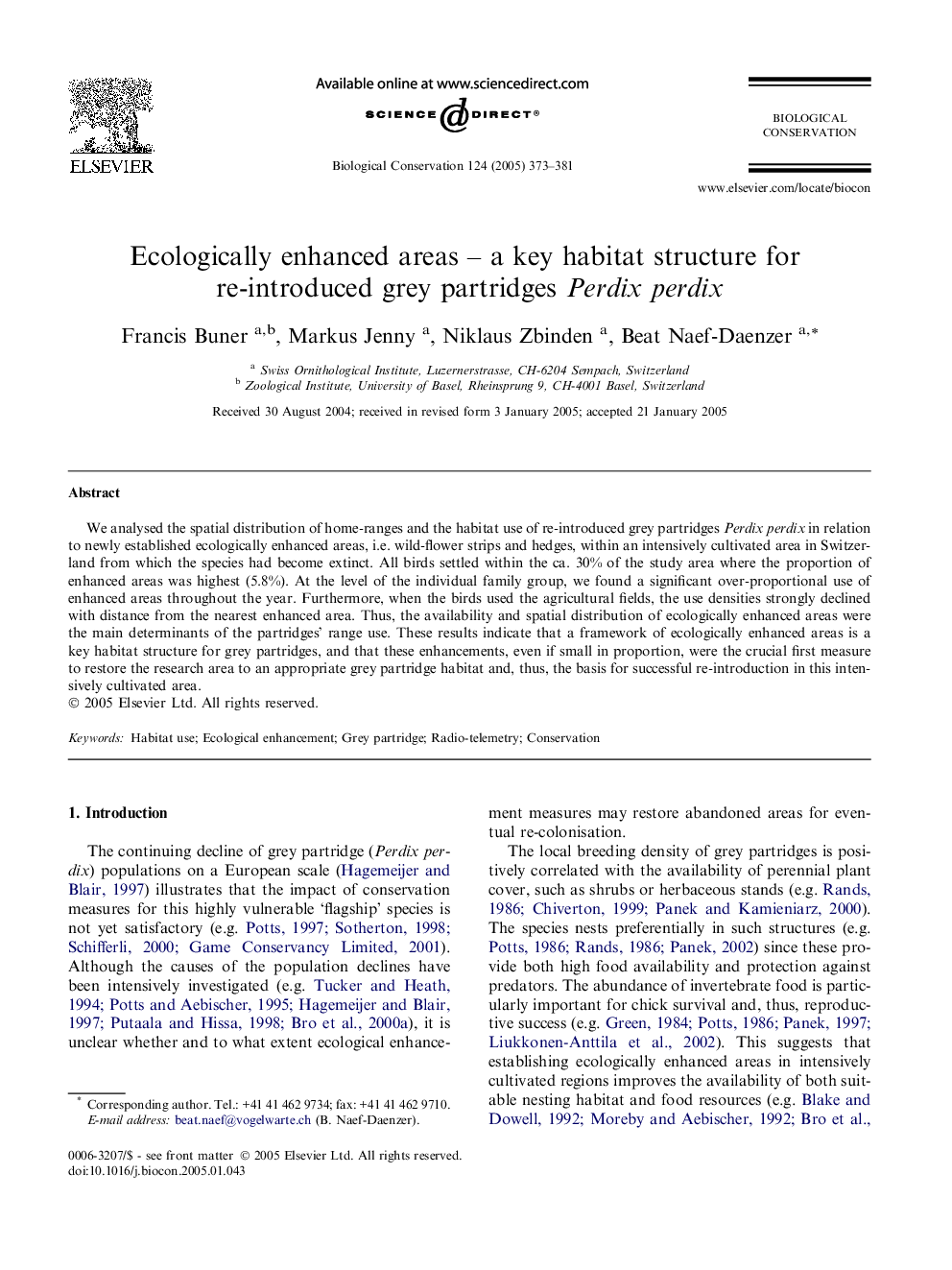| Article ID | Journal | Published Year | Pages | File Type |
|---|---|---|---|---|
| 9445926 | Biological Conservation | 2005 | 9 Pages |
Abstract
We analysed the spatial distribution of home-ranges and the habitat use of re-introduced grey partridges Perdix perdix in relation to newly established ecologically enhanced areas, i.e. wild-flower strips and hedges, within an intensively cultivated area in Switzerland from which the species had become extinct. All birds settled within the ca. 30% of the study area where the proportion of enhanced areas was highest (5.8%). At the level of the individual family group, we found a significant over-proportional use of enhanced areas throughout the year. Furthermore, when the birds used the agricultural fields, the use densities strongly declined with distance from the nearest enhanced area. Thus, the availability and spatial distribution of ecologically enhanced areas were the main determinants of the partridges' range use. These results indicate that a framework of ecologically enhanced areas is a key habitat structure for grey partridges, and that these enhancements, even if small in proportion, were the crucial first measure to restore the research area to an appropriate grey partridge habitat and, thus, the basis for successful re-introduction in this intensively cultivated area.
Related Topics
Life Sciences
Agricultural and Biological Sciences
Ecology, Evolution, Behavior and Systematics
Authors
Francis Buner, Markus Jenny, Niklaus Zbinden, Beat Naef-Daenzer,
